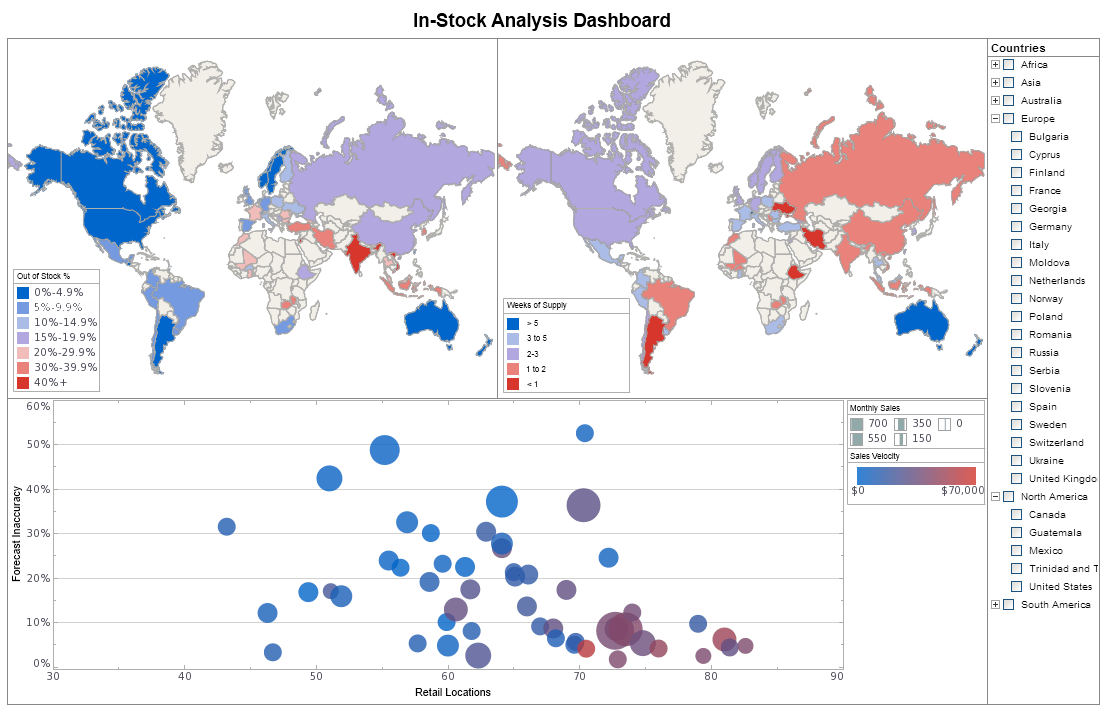InetSoft Webinar: The Visual Discovery Scenario
This is the continuation of the transcript of a Webinar hosted by InetSoft in April 2018 on the topic of "What are the Benefits of a Visual Reporting Solution?" The speaker is Abhishek Gupta, product manager at InetSoft.
We’re going to now continue with this visual discovery scenario. The question would be maybe these people have given to you back in time and haven’t given recently, so maybe we should look at the giving history. I think that’s a great idea.
To do that, we click on the giving history page. Now this page is actually tied to historical transactions. Every person who’s been a donor will have had a 100 or 1,000 transactions so this off of a different table, but it’s linked so the 1,567 people we have selected are now showing their gifts over time. It’s actually a good story for this group, with many of them giving three million a year roughly in the mid-90s.
It’s now up to the five, six million a year range. That’s good news for this group. You know that’s definitely a group worth taking a little deeper dive on. Let’s try to get a better feel for who they are and how they’re giving and whether or not they should get the more of our attention.
Let’s do some more visual discovery exercises. Well do some visual analysis so maybe let’s take a look at specific donors. I clicked on a Rachel Coccio. She has given four million. If I click on her, the charts now update to show her giving history. This is about her gift transactions, and she actually didn’t give a whole lot until 2000, and she jumped up and was giving 600,000 and 900,000 a year for two years and fell off.
 |
View a 2-minute demonstration of InetSoft's easy, agile, and robust BI software. |
So I think this is probably one, if I had some time, I’d want to take a little deeper look into how well she’s affiliated to the college, maybe look at some of her different activities and other things because it looks like she you know had a connection to the college at one time and might be worth investing sometime and then assigning someone to at least have some initial conversation.
So that’s actually another next step which is to show the flexibility here. Let’s look at another one. Jessica Bullock is another seven figure donor, and if I click on her, I can see the pattern. It’s a different pattern. She has been giving you 60, 100,000 a year. Then she has dropped off recently, and she would be another person probably you want to staff.
Another type of analysis you might do is geographic. If you want to look at this group, another question might be what are they actually live? So we can go to one of these other pages. There is a map view and you can look at regions and cities.
Before I jump to the map, the thing that I find so amazing is that in just a few minutes we went from a group of 93, over 93,000 down to Elizabeth Hammonds and Rachel Coccio to see their individual giving patterns so you could evaluate whether or not they might be people that we would want to assign a staffer to take some action. That is absolutely amazing.
| #1 Ranking: Read how InetSoft was rated #1 for user adoption in G2's user survey-based index | Read More |
That’s the whole idea of the visual reporting and analysis and what’s makes it fundamentally different from traditional reporting or a scorecard system where we literally have all the data here. We’re pivoting across tables, and that’s the beauty of what this technology is capable of.
So let’s take a look at the map then. Now we’re looking at just the view of where those roughly 15,000 people live and some patterns come out. Each city is sized by how many donors are in it. There are 142 in New York. You can see the hotter colors denote that volume. The area of Boston has got 27. There is a group in the Bay Area. There’s a group down here is South Florida and a smaller one in Chicago, in the Midwest.
We may want to finish this exercise by grabbing the ones in Florida. Maybe our president is going down there. I can just sweep on the map across the ones in Florida. I’ll grab them, and I’ll go back to my first page. I’ve got 98 people, and this is now the list of the 98. I can export the list out to Excel or back to the database, and we’ll give it to the event coordinator. You could have addresses. You could have phone numbers and whatever is in the database, we could show here.
That was the first example of visual reporting. Now let’s go back to the PowerPoint and pick up the story where we left off. So just to summarize the university giving analysis example, they’re using this in a number of different areas, but we saw visual reporting where we took the numbers and we looked at bar chart, which was an easy way to see the ratings.
| Previous: Fund Raising Dashboard Example |

